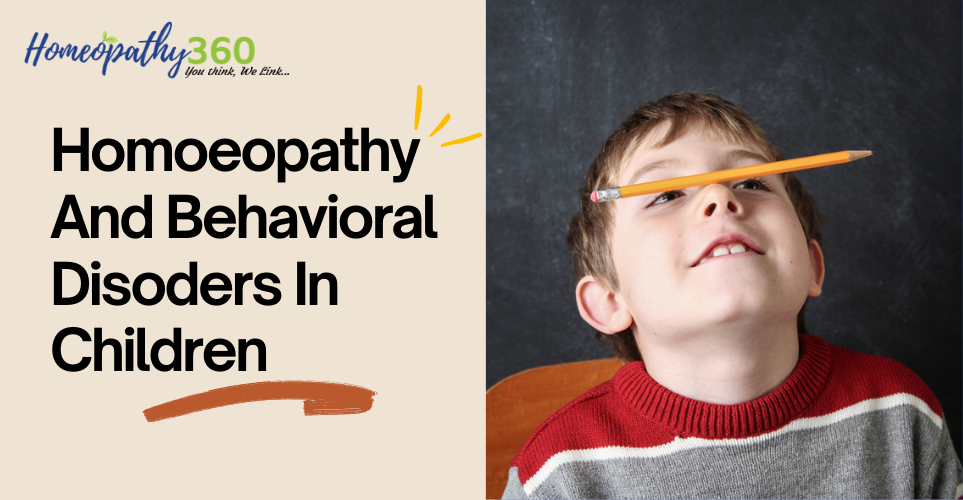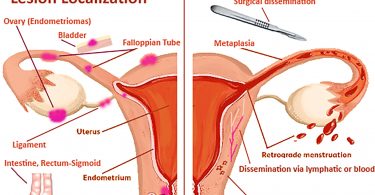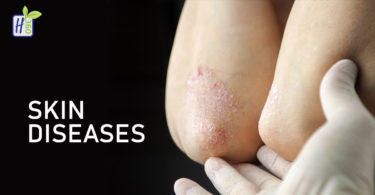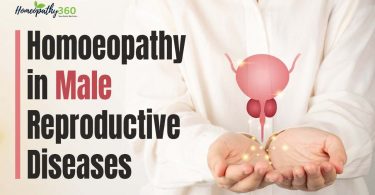
ABSTRACT
Behavior of a person defines a person. It reflects the inner nature of his or her. In the presenting article the different behavioral disorders of children will be presented along with a homoeopathic perspective of the treatment.
All children are not born the same as made by the hand of God. They have different areas of interest, different sensibilities, different desires, likes and dislikes, different ways to cope up with different situations. But we as adults tend to judge them from our spectacles which in turn is governed by society, our dreams and aspirations for them and morality and social values.
We superimpose upon them our own thought process neglecting the fact that they also have their own thought process. This further leads to development of various behavioral changes in children and ultimately disorders like ADHD and Autism in children which we will be further discussing in this article.
These two diseases are nowadays very commonly occurring in children and pose a very serious threat to the mental health of the same.
I hope and sincerely wish that we as homoeopaths can understand these disorders in a better way and provide permanent solutions /cure as advocated by our great Master Dr Samuel Hahnemann.
Keywords
ADHD, Autism, Behavior, Behavioral Disorders, Sycotic, Syphilitic, miasms, Homoeopathy.
INTRODUCTION
The two main behavioral disorders which we are going to discuss in this article are ADHD i.e. Attention Deficit Hyperactivity Disorder and Autism.
Firstly, we shall see the symptoms, statistical analysis, etiology and common treatment available for ADHD.
ADHD
As the name itself suggests ADHD or attention deficit hyperactivity disorder is characterized majorly by inability to concentrate one’s particular attention to a particular task and hyperactivity of the brain. Hyperactivity is characterized by useless activity resulting in fruitless action or destructive action and inability to concentrate on the particular task.
Characteristic Symptoms of ADHD.
Symptoms exhibiting attention deficit.
- Difficulty sustaining attention while completing long tasks.
- Failing to pay close attention to details.
- Forgetfulness
- Difficulty organizing tasks.
- Being easily distracted
- Unable to listen.
- Unable to finish schoolwork.
Symptoms exhibiting hyperactivity.
- Fidgety with or tapping hands and feet.
- Difficulty sitting still for extended periods.
- Talking excessively
- Answering questions before they are asked completely.
- Acting without thinking
- Little or no sense of danger
These symptoms are present in few numbers or more numbers depending on the severity of ADHD. Certain variations are also found.
Some times as such the child might look normal in behavior but when the he/she is performing a particular task or attending school he/she experiences difficulty in concentrating in class or find difficulty in performing even simple task like tying shoe laces or folding cloths etc.
Some children might find difficulty in remembering things and also difficulty in socializing.
Other children might also be shy in nature normally but show aggressive behavior when angry, or disobedience and inability to follow instructions.
Statistical Analysis: (The figures shown here but to only showcase the current trend of the disease and support the article)
(Source -Internet, Centres for Disease Control and Prevention website ) (CDC)
The Statistical Chart below clearly shows that the occurrence of ADHD has grown in the United States of America in the last decade. (1)
FIGURE 1.
Survey by National Institute of Health
(A study done on ADHD the prevalence of ADHD in primary school children is shown in the chart.) (2)
Comparison of ADHD in childhood and adolescence.
Aetiology
Coming to the common factors which can lead to development of ADHD in a child the following points can be taken into consideration. These factors are more of risk factors than being the exact causes.
- Genetic Causes
- Brain Injury
- Exposure to environmental risks(lead) during pregnancy or at a young age.
- Alcohol and tobacco abuse during pregnancy
- Premature Delivery
- Low birth weight associated with reduced brain size
- Modern Upbringing in urban areas along with decreased Moral and Emotional support to the child.
Also, various psychiatric studies have shown that excessive mental pressure on the child to perform academically and socially and when the environment at home is not favourable to the child (excessive scolding and beating cursing abusing the child) can lead to aggressive and unruly behaviour in children and adolescents.
Conventional Treatment for ADHD
The conventional approach to treat ADHD is
- Cognitive Behaviour Therapy
- Counselling
- Anger management
- Family therapy
Medications include stimulants – which contain various forms of methylphenidate and amphetamine – have a calming effect on hyperactive children with ADHD, Stimulants are thought to increase brain levels of dopamine, a neurotransmitter associated with motivation, attention and movement.
The FDA has also approved four non-stimulants to treat the symptoms of ADHD: Strattera (atomoxetine), Intuniv (guanfacine), Kapvay (clonidine) and Qelbree (viloxazine).
HOMOEOPATHIC PROPHYLAXIS FOR ADHD.
Homoeopathy as an art of curing disease can provide a very good solution in treating the symptoms of ADHD as it takes into consideration the mental picture of the patient.
Mentals symptoms are given the utmost importance in homoeopathy as instructed by Dr Hahnemann in aphorisms 211 to 220.
The commonly used homoeopathic medicines in treatment of ADHD are following:
- Chamomilla- The chief guiding symptoms belong to the mental and emotion group. Especially of frequent employment in diseases of children, where peevishness, restlessness, and colic are present. A disposition that is mild, calm, and gentle; sluggish and constipated bowels contra-indicate chamomilla.
- Hyoscyamus- Disturbs the nervous system profoundly. It causes a perfect picture of mania of a quarrelsome and obscene character. Very talkative, and persists in stripping herself, or uncovering genitals. Is jealous, afraid of being poisoned, etc. Very suspicious. Talkative, obscene, lascivious mania uncovers body; jealous, foolish. Great hilarity; inclined to laugh at everything.
- Baryta Carb – Loss of memory, mental weakness. Irresolute. Lost confidence in himself. Senile dementia. Confusion. Bashful. Aversion to strangers. Childish; grief over trifles. Specially indicated in infancy and old age. This remedy brings aid to scrofulous children, especially if they are backward mentally and physically, are dwarfish, do not grow and develop, have scrofulous ophthalmia, swollen abdomen, take cold easily, and then always have swollen tonsils.
- Tarentula -Extreme restlessness; must keep in constant motion even though walking aggravates. Hysterical epilepsy. Intense sexual excitement. Sudden alteration of mood. Foxy. Destructive impulses; moral relaxation. Must constantly busy herself or walk. Sensitive to music. Averse to company but want someone present. Ungrateful, discontented. Guided by whims.
- Stramonium-Devout, earnest, beseeching and ceaseless talking. Loquacious, garrulous, laughing, singing, swearing, praying, rhyming. Sees ghosts, hears voices, talks with spirits. Rapid changes from joy to sadness. Violent and lewd. Delusions about his identity; thinks himself tall, double, a part missing. Religious mania. Cannot bear solitude or darkness; must have light and company. Sight of water or anything glittering brings on spasms. Delirium, with desire to escape.
- Tuberculinum – Contradictory characteristics of Tuberculinum are mania and melancholia, insomnia and sopor. Irritable, especially when awakening. Depressed, melancholy. Fear of dogs. Animals especially. Desire to use foul language, curse and swear.
- Veratrum Album – Melancholy, with stupor and mania. Sits in a stupid manner; notices nothing; Sullen indifference. Frenzy of excitement; shrieks, curses. Puerperal mania. Aimless wandering from home. Delusions of impending misfortunes. Mania, with desire to cut and tear things. Attacks of pain, with delirium driving to madness. Cursing, howling all night. “Coprophagia” violent mania alternates with silence and refusal to talk.
In addition to the above-mentioned medicine any homoeopathic remedy can be indicated to treat ADHD based upon the totality of the symptoms. Remedies like Natrum Muriaticum, Magnesia Carb, Lachesis, Pulsatilla, Lycopodium can also be indicated based upon totality.
You will see further in the Clinical case section of the article that Natrum Muriaticum removed the symptoms of ADHD and brought mental peace to the child and improved his cognitive and behavioural function.
Homoeopathic Miasmatic Analysis of ADHD
ADHD has mainly two miasms underlying:
1.Sycotic – Includes symptoms like brooding, difficulty in attention, forgetfulness, daydreaming, planning and plotting, repeated thoughts and actions, anxiety, depression, fidgety etc
2.Syphilitic- Includes symptoms like Anger, jealousy, destructiveness, aggressive behaviour, disobedience, suicidal tendencies etc.
Case Study
The patient, an 11-year-old male child, presented in my clinic with his parents. (Date 5th January 2023)
Presenting Complaints of the patient:
1.Decreased concentration in studies.
2.Hyperactive behaviour, the child could not sit still while eating or studying. He would run every now and then. (The mother was very much irritated by this)
3.Was very self-willed Did not obey his parents
4.Hyperactive behaviour, danced frivolously,
5.Teachers also complained that in class he had reduced attention and engaged in quarrels with his co students quite often.
History of Presenting Complaints
The child was hyperactive since childhood.
But the complaint of decreased concentration has increased recently.
Has screen time of more than 3 hours a day.
Past history
1.Suffered from right sided inguinal hernia since birth. Got operated on for it last year.
2.Random attacks of bronchitis when exposed to excessive cold.
Family History
1.Father also had inguinal hernia for the last 10 years. Also got operated 2 years back.
2.Mother has hypertension and has gestational diabetes.
Personal history
• Occupation: Student.
• Marital status: Unmarried.
• Habits Or Addictions:
• Dietetic habits: Fussy Eater
• Socio-economic condition: Good
• Accommodation: Living in a well-ventilated house.
Physical generals:-
• General modalities: Bronchitis in winter
• General tendencies: Susceptible to cold
• Thermal reaction: Chilly patient.
• Appearance: Lean and thin, Emaciated, Pigeon chest, Has dark circles around eyes
• Appetite: good, can’t tolerate hunger.
• Thirst: Moderate, 2-3 litres/ day.
• Desire: spicy and salty ++
• Aversion: Milk, Green leafy vegetables
• Intolerance: Nothing specific
• Urine : Normal
• Stool: Satisfactory.
• Sleep: sound sleep, but startles in sleep
• Dreams: Sees frequent ghost in dreams
• Perspiration: Normal
• Tongue: clean and moist
Mental generals-
- Restlessness
- Curses and Swears
- Fear of being alone especially at night
- Vexed on trifles.
- Cannot bear contradiction.
- Gets violent when angry.
- Consolation aggravates.
- Weeping disposition
- Self-willed
- Emotional by nature
Physical examination:-
- General survey: Scar of inguinal hernia operation right side
- Systemic examination: No abnormality detected.
Clinical diagnosis: ADHD
Repertorisation Sheet
CASE FOLLOW UP
| FOLLOW UP | IMPROVEMENT OF SYMPTOMS | PRESCRIPTION MADE |
| IST PRESCRIPTION ON 12 JAN 2023 | Stramonium 1M /OD FOR 7 DAYS FOLLOWED BY PLACEBO FOR 3 WEEKS | |
| 12 FEB 2023/1ST FOLLOW UP | NO IMPROVEMENT OF SYMPTOMS | Stramonium 1M /OD FOR 7 DAYS REPEATED FOLLOWED BY PLACEBO FOR 3 WEEKS |
| 14 MARCH 2023/2ND FOLLOW UP | DECREASE IN PHYSICAL RESTLESSNESS. MENTALLY IMPROVEMENT IN AGGRESSIVENESS. | Saccharum Lactis FOR 1 MONTH |
| 12 APRIL 2023/3RD FOLLOW UP | NO FURTHER IMPROVEMENT OF SYMPTOMS | Stramonium 1M REPEATED OD DOSE/1 WEEK FOLLOWED BY PLACEBO FOR THREE WEEKS |
| 13 MAY 2023/4TH FOLLOW UP | NO FURTHER IMPROVEMENT OF SYMPTOMS | CASE ANALYSED AGAIN AND Natrum Muriaticum SELECTED ON THE EMOTIONAL PLANE OF PATIENT Natrum Muriaticum 1M PRESCRIBED OD DOSE/ 1 WEEK FOLLOWED BY PLACEBO FOR 3 WEEKS |
| 13TH JUNE 2023/5TH FOLLOW UP | THE CHILD BECAME VERY MUCH CALMER MENTALLY. HIS FOCUS IN STUDIES IMPROVED .PHYSICAL RESTLESSNESS WAS ALSO LESS.OVERALL IMPROVEMENT IN SYMPTOMS 30- 40 PER CENT. | Saccharum Lactis FOR 1 MONTH |
| 13TH JULY ,2023/6th FOLLOW UP | NO FURTHER IMPROVEMENT OF SYMPTOMS | Natrum Muriaticum 10 M PRESCRIBED.OD DOSE /WEEK FOLLOWED BY PLACEBO FOR NEXT 6 DAYS.SAME PRESCRIPTION REPEATED EVERY WEEK IN MONTH OF JULY/AUGUST. |
| 14th August 2023/7TH FOLLOW UP | MORE IMPROVEMENT IN CONCENTRATION IN STUDIES. CHILD REMAINS MORE HAPPY AND CONTENT AND IS LESS FRIVOLOUS. BETTER AT CONCENTRATION AND FOCUS WHILE PERFORMING ALL ACTIVITIES. | PLACEBO FOR 1 MONTH |
| 15th Sept 2023/8th FOLLOW UP | 70 TO 80 PERCENT BETTER.STILL VISITING ME FOR CONSULTATION. | RUNNING ON PLACEBO. |
AUTISM
The next disease which we are going to discuss is Autism.
We are going to see its occurrence, etiology, symptoms and treatments available and of course its homoeopathic prognosis and prophylaxis.
What is Autism?
Autism also known as Autism Spectrum Disorder is a neurological and developmental disorder that affects how people interact with others, communicate, learn and behave. Although autism can be diagnosed at any age ,it is described as a “developmental disorder” because symptoms generally appear in the first 2 years of life.
Symptoms
The main symptoms of Autism or ASD which the child presents can be
- Difficulty with communication and interaction with other people
- Restricted interests and repetitive behaviours
- Symptoms that affect their ability to function in school, work, and other areas of life.
Social communication / interaction behaviours may include:
- Making little or inconsistent eye contact
- Appearing not to look at or listen to people who are talking.
- Infrequently sharing interest, emotion, or enjoyment
- Responding slowly to other people’s questions
- Having difficulties with conversation
- Difficulties adjusting behaviours to social situations.
- Difficulties in making friends.
Restrictive / repetitive behaviours may include:
- Repeating certain behaviours or having unusual behaviours, such as repeating words or phrases (a behaviour called echolalia)
- Having a lasting intense interest in specific topics, such as numbers, details, or facts.
- Being more sensitive or less sensitive than other people to sensory input, such as light, sound, clothing, or temperature.
Figure 4.(3)
Other than exhibiting these symptoms children with autism might have some very extraordinary skills which are not exhibited by normal children. These may include:
- Science, math or art skills which are extraordinary.
- Very keen interest in music and instruments
- Ability to feel and see colors intensely.
- Clairvoyance or heightened intuition (As quoted by journalists of New York Times In America during the last 5 decades there has been emergence of some differently abled children who on one end have autism like symptoms associated with decreased social and scholastic activities but one the other end of spectrum have intuition qualities where they can feel “GOD” or predict the future. These children are called as
INDIGO CHILDREN by the new age spirituality thinkers and are supposedly “blessed” .
These children also exhibit above normal levels of empathy, kindness and love and care for humanity.
Current Trend of Autism
Source- CDC (Centre for Disease Control and Prevention, United States of America)
The below chart clearly shows the rising trend of Autism worldwide. (4)(5)
Figure 5.
Study by( National Institue of Health ) in rural ,urban and tribal children In India about occurrence of Autism.
Figure 6.
Etiology
As we had previously seen in ADHD there are certain risk factors associated which can predispose to the disease, similarly in Autism certain risk factors are associated which can lead to autism.
Some of the common risk factors which can lead to autism are:
- Having an older parent or siblings having autism
- Family history of mental disorders
- Having certain genetic conditions such as Down Syndrome or Fragile X syndrome
- Having low birth weight and decreased brain size
- Brain Injury
- Excessive abuse of alcohol and tobacco during pregnancy
Homoeopathic Prognosis and Prophylaxis.
Homoeopathy can provide a holistic approach to the disease similarly to ADHD.
Homoeopathy is the only medicinal system in the world which takes into account the mental symptoms of the patient that too in great depths. We have an exhausting repertory covering the minutest details of the emotions, feelings and thoughts which go inside the head of a mental illness patient in the form of various rubrics. Any medicine which covers the totality of the patient i.e. to say the mental generals, physical generals, modalities and the particulars of the case will cure the disease slowly and in the ideal nature of cure.
Autism has its roots in the genes so the dutiful and highly observant homoeopathic physician has to select the right remedy and also the right potency favorably the higher ones ( 1M, 10 M, 50 millesimal or LM potencies) so that the disease can be uprooted from its base.
Some of the medicines which can be used to treat Autism Can be the following:
1.Carcinosin
2.Tuberculinum
3.Lycopodium
4.Magnesia Carb
5.Agaricus Muscaris
6.Cuprum Metallicum
7.Helleborus Niger
In Addition to the above-mentioned drugs many medicines based on the constitution of the patient can be used to improve the symptoms of an autistic child. Obviously, the above mentioned medicines should be prescribed after proper case taking and on the basis of individual symptoms which point towards the remedy.
DISCUSSION AND CONCLUSION
We as homoeopaths have a great responsibility to tackle the menace of these two diseases as we have the right tools and method.
In my opinion ADHD and Autism are two sides of the same coin.
One is more characterized by hyperactivity and unruly behavior, while the other by more inactivity and fruitless activity.
But both are attacking the part of the brain which controls the behavior and mind of the patient.
In my further observation as a homoeopath of both the diseases the following factors can be taken into consideration while dealing with cases of ADHD and Autism.
Some of them are
- Increase in the rise of nuclear families. Joint families provided better support and value systems for the growth of the child on a mental and emotional plane. Also if both parents are earning the children do not get proper attention and care which is much mandatory in the initial growth years.
- Domestic abuse, sexual violence, rising cases of divorces in urban areas predispose and leave the child in an emotional vulnerable state. (The thing here to notice is that neurodevelopment on an emotional level is very very important during the starting phase of years of the child in the age group of 1 to 10 years which is very often neglected by adults).
- Unnecessary pressure on children to perform academically takes a toll on their mental health and leads to nervous breakdown.
- Excessive exposure to gadgets like laptops, computers and mobile hampers brain growth.
Unlimited, unchecked screen time seems to promote aggressiveness in children.
Thus, we can say that both ADHD and Autism is the byproduct of excessive urbanization.
Both diseases need to be seen not only from a medical point of view but also from a socio-cultural point of view.
In the end I would like to conclude that I have not cured any cases of Autism per se, (for ADHD provided the case study above) but with the blessings of Almighty and My respected master Dr Hahnemann, I would like to heal this painful disease using the magical system of Homoeopathy.
REFERENCES
Webpages
1.Centres for Disease Control And Prevention Website
National Survey of Child Health from 2006 to 2011; National Survey of Child Health 2016 to 2019(Survey Based on Data Collected Telephonically in 50 States of America in the above mentioned duration Done by NORC at the University of Chicago) (Data also Collected from Data Resource Centre For Child and Adolescent Health)
Url : https://www.cdc.gov/ncbddd/adhd/data.html
2.National Institute of Health/National Library of Medicine (Official Website of United States Government)
Citation: Indian J Psychiatry. 2013 Oct-Dec; 55(4): 338–342.
doi: 10.4103/0019-5545.120544
Topic Title: Prevalence of Attention Deficit Hyperactivity Disorder in primary school children
Jyothsna Akam Venkata and Anuja S. Panicker
Url: https://www.ncbi.nlm.nih.gov/pmc/articles/PMC3890923/
3. Centers For Disease Control and Prevention Website
Data Collected from 11 ADDM (Autism and Developmental Disabilities Monitoring Network)
Url : https://www.autismresources.co.za/blogs/getting-started/latest-autism-prevalence-statistics-reported-in-the-usa-and-south-africa
4. National Institute of Health/National Library of Medicine (Official Website of United States Government)
Citation: J Neurosci Rural Pract. 2017 Jul-Sep; 8(3): 368–374.
doi: 10.4103/jnrp.jnrp_329_16
Prevalence of Autism Spectrum Disorder among Rural, Urban, and Tribal Children (1–10 Years of Age)
Sunil Kumar Raina, Vishav Chander, Ashok K. Bhardwaj, Dinesh Kumar, Seema Sharma,1 Vipasha Kashyap, Mitasha Singh, and Amit Bhardwaj2
Study Site: Himachal Pradesh
Url: https://www.ncbi.nlm.nih.gov/pmc/articles/PMC5488556/
5.National Institute of Health (official Website of United States Govt.)
Citation: Indian J Med Res. 2023 Apr; 157(4): 227–229.
Published online 2023 May 31. doi: 10.4103/ijmr.ijmr_506_23
Topic Title: Autism in India: Time for a national programme
Bhismadev Chakrabarti1,2,3
Url: https://www.ncbi.nlm.nih.gov/pmc/articles/PMC10438407/





